Experiments
Dr. Blatz’s Trick Chair of Terror
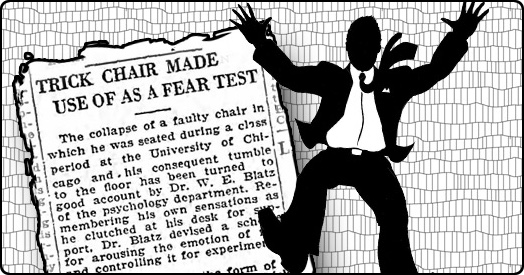
While he was a grad student at the University of Chicago in the early 1920s, William Blatz was sitting in class one day, leaning back in his chair, when suddenly the chair collapsed beneath him, sending him sprawling backwards, crying out in fright. The experience was unsettling, but it gave him an idea for an unusual psychology experiment.
He designed a trick chair that would collapse backwards without warning when he flipped an electric switch. The chair was padded, so its occupant wouldn't get hurt. But Blatz figured that the sensation of abruptly, unexpectedly falling backwards would provoke a strong, measurable reaction in subjects. This would allow him to study the physiology of fear under controlled, repeatable conditions. He performed his experiment on a series of unsuspecting victims.
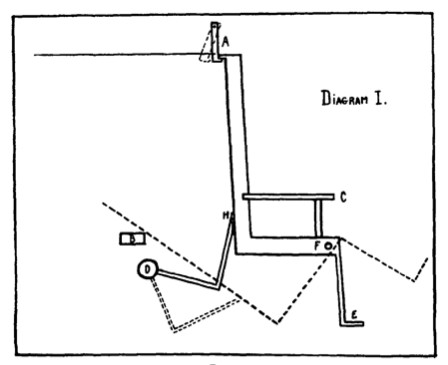
Diagram of Blatz's trick chair.
When the hook (A) at the top was released, the chair plunged backwards.
More in extended >>
Posted By: Alex - Tue Dec 26, 2017 -
Comments (2)
Category: Experiments, Psychology, 1920s
Personal body space
As the population increases, we will all have to learn to accept strangers on the street standing very close to us.According to recently collected facts, there were three basic reactions: (1) He-she slowly backed away as the interviewer got closer, (2) He-she struck a defensive pose such as folding arms, looking down, or even turning to one side, and (3) No reaction, though most people do have some kind of reaction...
According to Mark, most people have this "wall" about 18 inches around them that excludes all people from entering. What the interviewers were doing when they moved closer to the person was violating personal body space, causing them to react.
Steve says, "It's a shame this happens because as our world gets more and more crowded, we'll have to get closer together. Let's all start getting closer together and break down that wall."
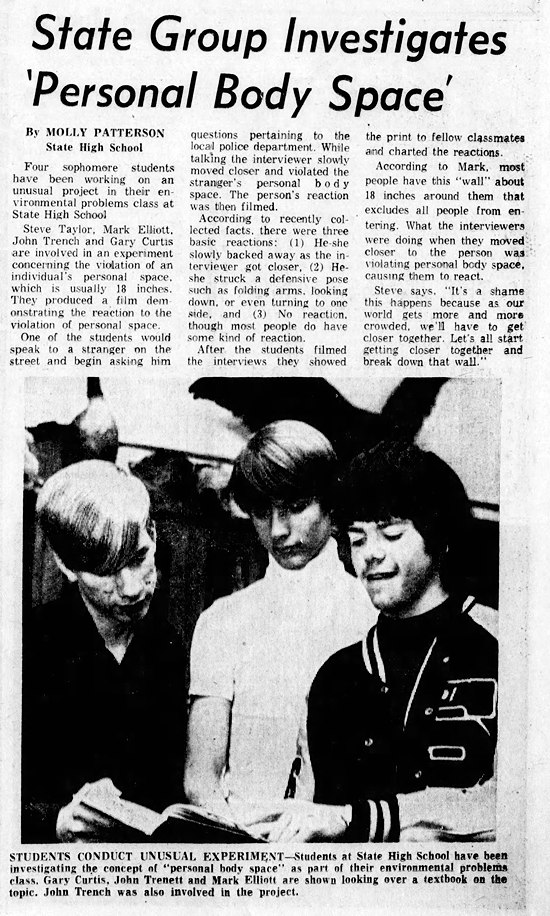
Terre Haute Tribune - Mar 31, 1974
Posted By: Alex - Mon Dec 18, 2017 -
Comments (5)
Category: Experiments, Psychology, 1970s
Bikini Experiment
So why was Simone Harris standing on a Sydney street in a bikini? Was this a publicity stunt? Was she a psychologist conducting research? A performance artist being weird? I haven't been able to find answers anywhere.
Racine Journal Times - June 17, 1970
Posted By: Alex - Wed Nov 15, 2017 -
Comments (2)
Category: Experiments, Psychology, 1970s
Air Raid Noise Experiment
These pictures in the Google Arts picture archive don't come with any explanatory text, except that they're from an "Air Raid Noise Experiment" conducted in Nuneaton in 1941. But I suspect that the experiment was part of a series of psychological experiments conducted in the UK in 1941 that attempted to "harden Britons to bomb shock." The idea was to expose people to the sounds of air raid sirens and battle sounds so that they would lose their fear of them. As described in the news clipping below: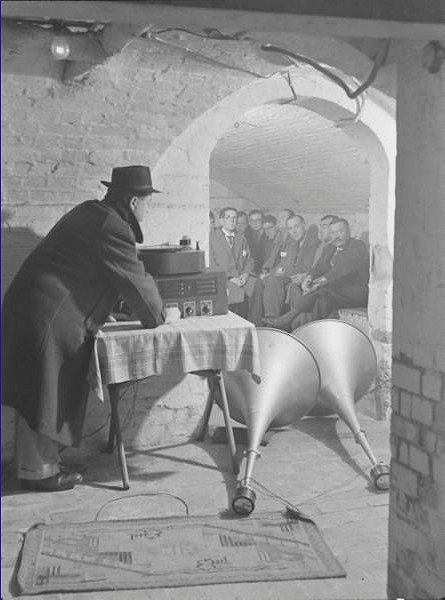
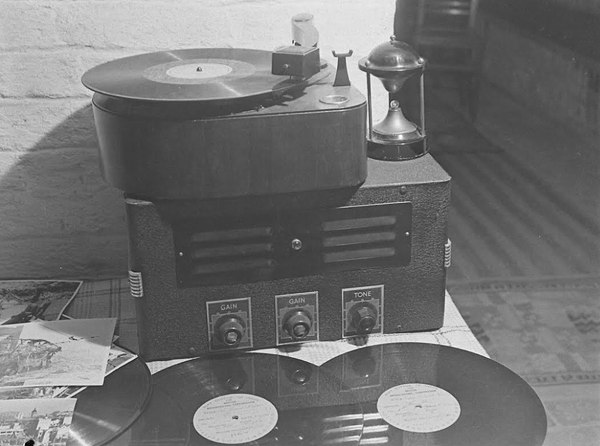
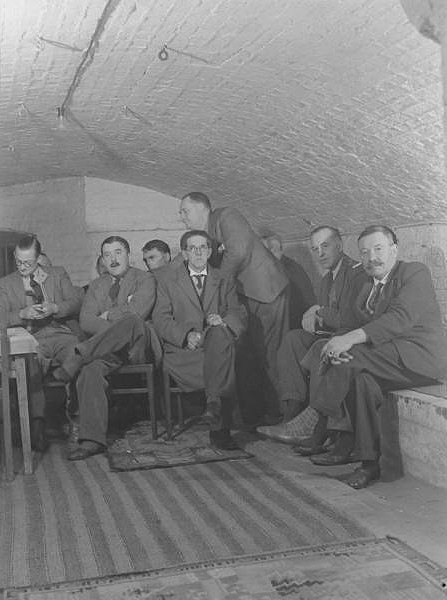
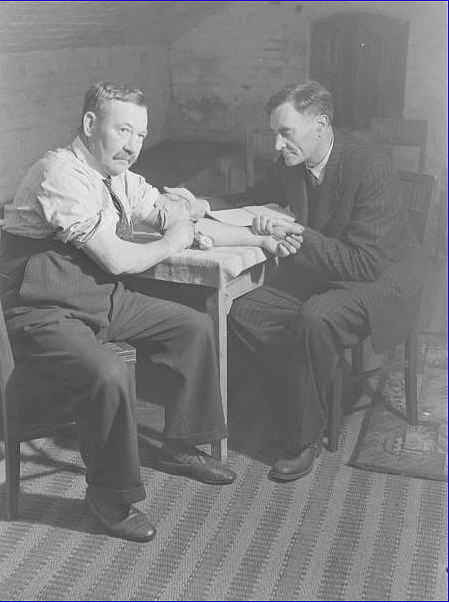
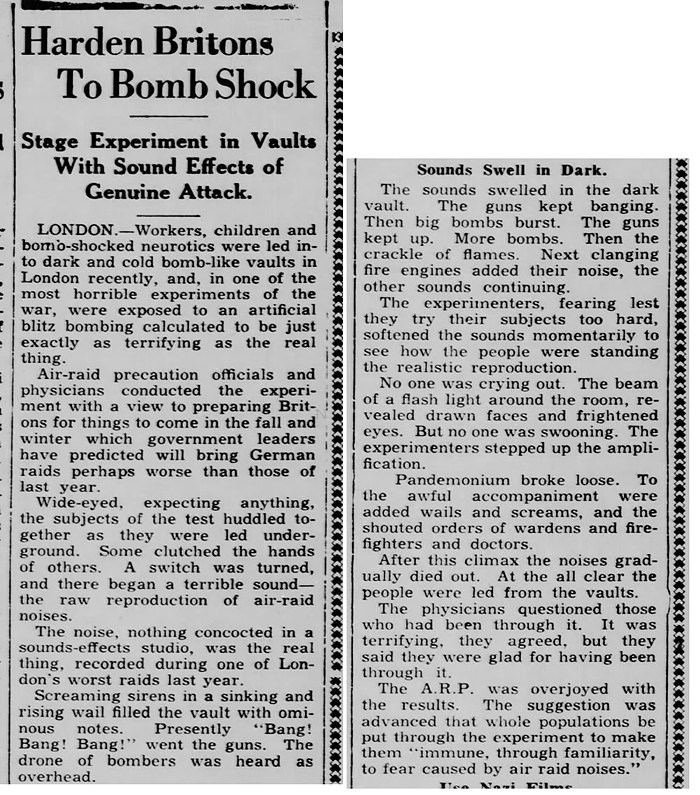
The Greenfield Daily Reporter - Nov 28 1941
I've been aware of these experiments for a while. I previously posted something about them back in 2009. But I just came across these photos and realized they must be from one of these experiments.
Posted By: Alex - Thu Nov 02, 2017 -
Comments (2)
Category: Noises and Other Public Disturbances of the Peace, War, Experiments, Psychology, 1940s
Effect of Gamma Rays on Marigolds
Paul Zindel's play The Effect of Gamma Rays on Man-in-the-Moon Marigolds won the Pulitzer Prize for Drama in 1971. It inspired Paul Newman to make a film of the same name the next year.And in 1974 it inspired 13-year-old Danny Kleiner of Philadelphia to wonder what the effect of gamma rays on marigolds would be. So he made that his school science project. He used cobalt radiation to produce the gamma rays. Unfortunately, I don't know what the results of his experiment were.
I haven't read or seen Zindel's play so I don't know if a similar experiment is featured in the book. I'm guessing it must be. I wonder how many high school students were inspired by Zindel's play to do similar experiments?
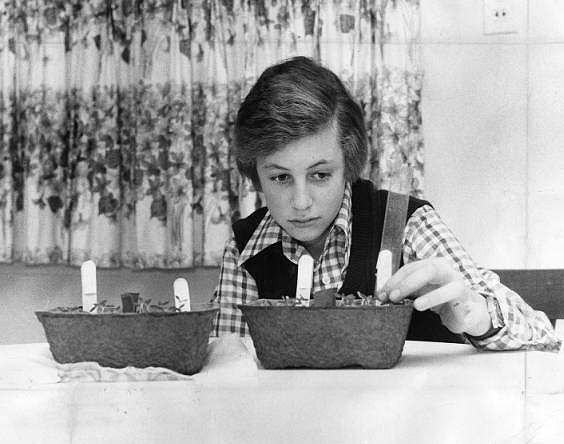
Danny Kleiner examining his gamma-ray-exposed marigolds
via Temple University Library
Posted By: Alex - Sat Oct 14, 2017 -
Comments (4)
Category: Theater and Stage, Experiments, 1970s
Temporarily Blind
May 1974: Three students at Northeast High School in Philadelphia participated in a medical experiment in which for five days they experienced what it was like to be blind.I'm guessing this kind of experiment would never be allowed nowadays in a high school.
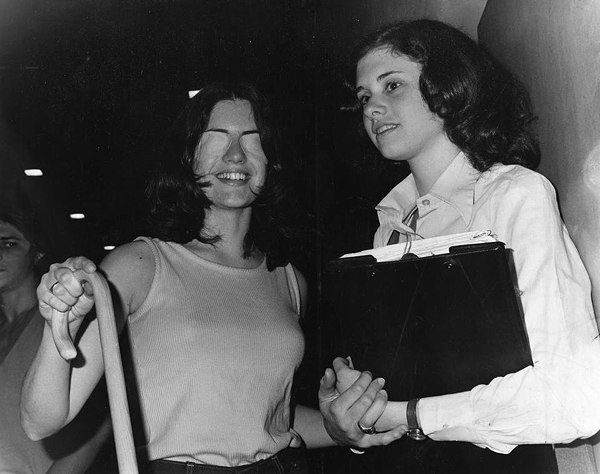
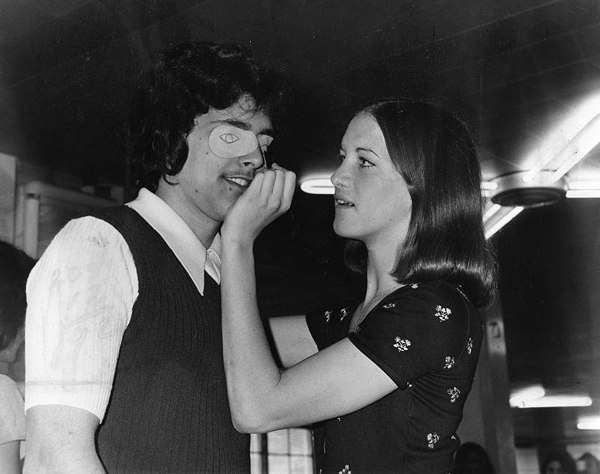
Source: Temple University digital collections (image one, image two)
Posted By: Alex - Mon Oct 09, 2017 -
Comments (2)
Category: School, Experiments, 1970s
Yellow Snow Experiment
An experiment conducted by animal behavior expert Marc Bekoff of the University of Colorado, Boulder with his dog, Jethro:More info: Psychology Today - June 29, 2009
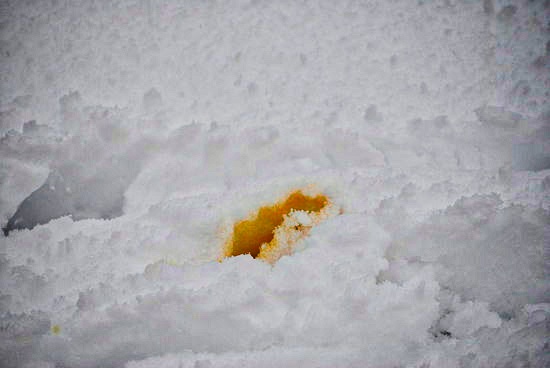
Posted By: Alex - Sat Aug 19, 2017 -
Comments (0)
Category: Animals, Experiments, Body Fluids
Lloyd Thomas Koritz — Human Guinea Pig
As a young doctor-in-training at the University of Illinois Medical School in the early 1950s, Lloyd Thomas Koritz volunteered to be a guinea pig in a variety of experiments. In one, he ate a pound of raw liver daily (washed down by a quart of milk) to help study liver metabolism. In a fatigue study he was kept unconscious for 11 hours.But the most dangerous experiment involved being hung in a harness from a specially-constructed mast and knocked out with anesthesia and curare, so that his breathing stopped. Researchers then tested methods of resuscitating him. They were searching for more efficient ways of resuscitating electrocuted power line workers, so that they could revive the workers while they were still hanging from the poles instead of having to lower them while unconscious to the ground, which takes a lot of time.
I think it would be hard nowadays to get approval to do these kinds of tests on human subjects. Koritz said he disliked the liver-eating experiment the most. In 1953 he was given the Walter Reed Society Award for being willing to repeatedly risk his life for the sake of science.

"Drugged into unconsciousness and paralysis, [Koritz] willingly risked insanity
and death in a significant experiment. This test helped determine the best way
to revive electrically-shocked linemen."
Saturday Evening Post - July 25, 1953

San Bernardino County Sun - Apr 9, 1953

San Bernardino County Sun - Apr 9, 1953
Posted By: Alex - Tue May 23, 2017 -
Comments (8)
Category: Science, Experiments, 1950s
Controlling Turtle Motion with Human Thought
Researchers in Korea are developing a technology that will allow humans to control turtles through thought alone. This is achieved without having to implant any device inside the turtle's brain. Nor does it involve telekinetic powers.It takes advantage of the fact that a turtle will reliably walk towards a white light, because of their instinctive escape behavior. So the turtle wears a "stimulation device" that blocks its view except in a specific direction that can be remotedly adjusted by a human wearing a "brain-computer interface." The interface can pick up simple thought commands: left, right, or idle. It then transmits the command to the turtle stimulation device, which adjusts its position, and the turtle walks in the desired direction.
The researchers note that their system "could have military applications such as reconnaissance and surveillance," and also "this system could be used in unconventional applications such as immersive virtual reality systems that give the user a sense of oneness with the controlled animal, as if it were their surrogate agent."
More info: Science Daily

Posted By: Alex - Sat Apr 01, 2017 -
Comments (5)
Category: Animals, Science, Experiments
Cockroach Magnetization
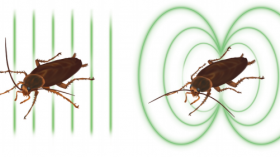
Researchers at Nanyang Technological University in Singapore recently made an unusual discovery, which is that "the magnetic properties of living cockroaches are strikingly different from those of dead cockroaches."
Place a living cockroach in a magnetic field and it'll become magnetized, and then stay magnetized for about 50 minutes.
Place a dead cockroach in a magnetic field and it'll also become magnetized, but then remain magnetized for almost 50 hours.
The reason for the difference:
So I'm curious how strongly magnetized dead cockroaches become. Would it be possible to use them as refrigerator magnets?
More info: MIT Technology Review
Posted By: Alex - Tue Feb 28, 2017 -
Comments (5)
Category: Insects and Spiders, Science, Experiments

| Who We Are |
|---|
| Alex Boese Alex is the creator and curator of the Museum of Hoaxes. He's also the author of various weird, non-fiction, science-themed books such as Elephants on Acid and Psychedelic Apes. Paul Di Filippo Paul has been paid to put weird ideas into fictional form for over thirty years, in his career as a noted science fiction writer. He has recently begun blogging on many curious topics with three fellow writers at The Inferior 4+1. Contact Us |




